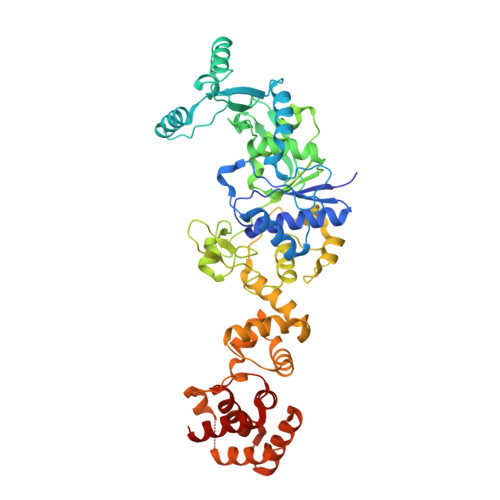Crystal structures of glutamyl-tRNA synthetase from Elizabethkingia anopheles and E. meningosepticum.
Brooks, L., Subramanian, S., Dranow, D.M., Mayclin, S.J., Myler, P.J., Asojo, O.A.(2022) Acta Crystallogr F Struct Biol Commun 78: 306-312
- PubMed: 35924598
- DOI: https://doi.org/10.1107/S2053230X22007555
- Primary Citation of Related Structures:
6B1Z, 6BRL - PubMed Abstract:
Elizabethkingia bacteria are globally emerging pathogens that cause opportunistic and nosocomial infections, with up to 40% mortality among the immunocompromised. Elizabethkingia species are in the pipeline of organisms for high-throughput structural analysis at the Seattle Structural Genomics Center for Infectious Disease (SSGCID). These efforts include the structure-function analysis of potential therapeutic targets. Glutamyl-tRNA synthetase (GluRS) is essential for tRNA aminoacylation and is under investigation as a bacterial drug target. The SSGCID produced, crystallized and determined high-resolution structures of GluRS from E. meningosepticum (EmGluRS) and E. anopheles (EaGluRS). EmGluRS was co-crystallized with glutamate, while EaGluRS is an apo structure. EmGluRS shares ∼97% sequence identity with EaGluRS but less than 39% sequence identity with any other structure in the Protein Data Bank. EmGluRS and EaGluRS have the prototypical bacterial GluRS topology. EmGluRS and EaGluRS have similar binding sites and tertiary structures to other bacterial GluRSs that are promising drug targets. These structural similarities can be exploited for drug discovery.
Organizational Affiliation:
Department of Chemistry and Biochemistry, Hampton University, Hampton, VA 23668, USA.

















